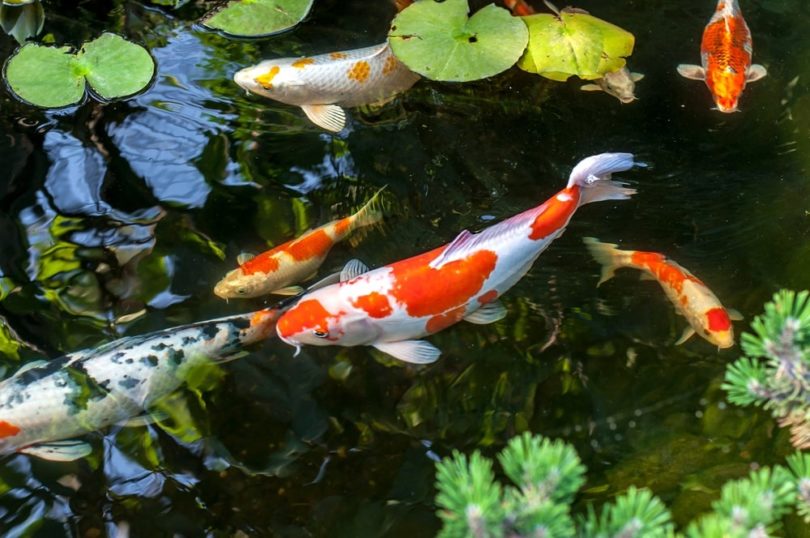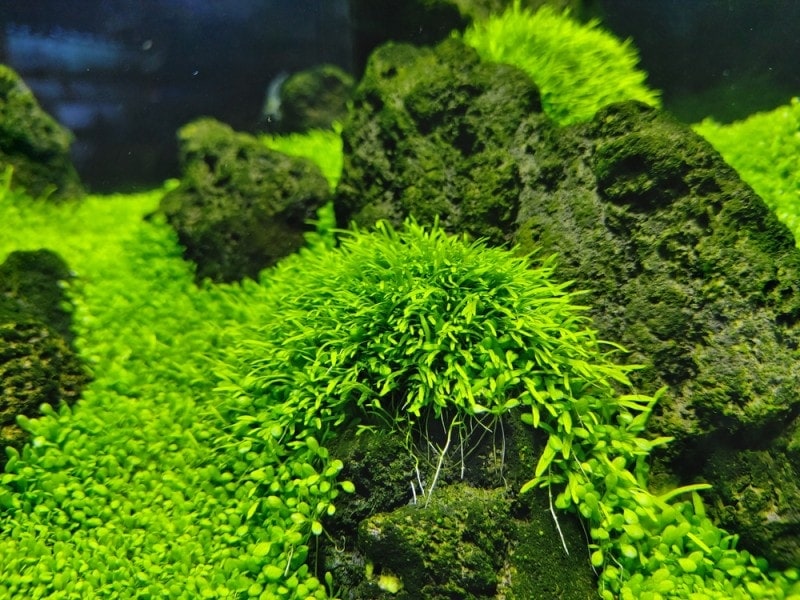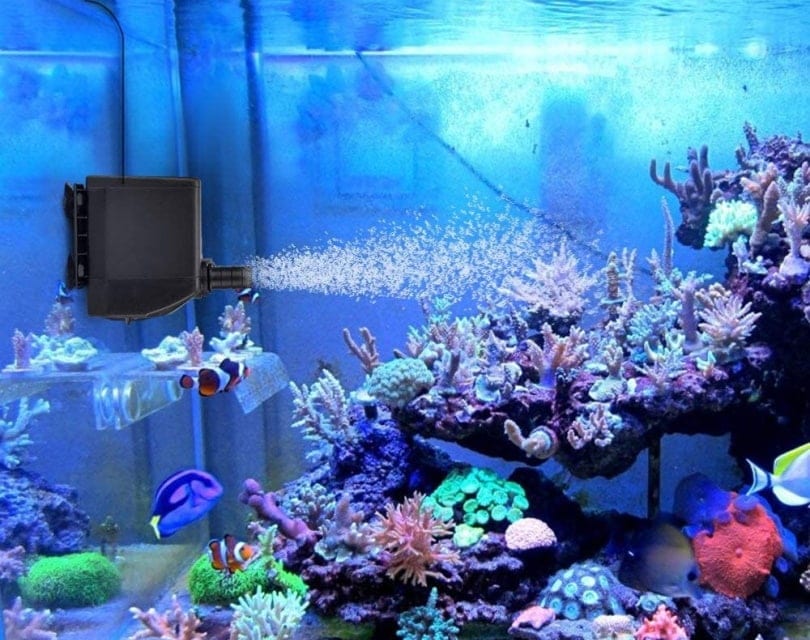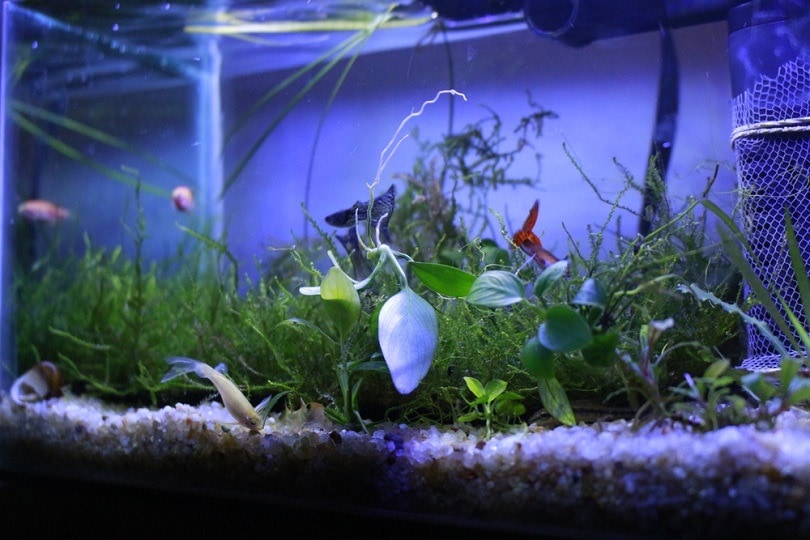15 Types of Angelfish: Common Strains, Care Tips & Pictures

Updated on
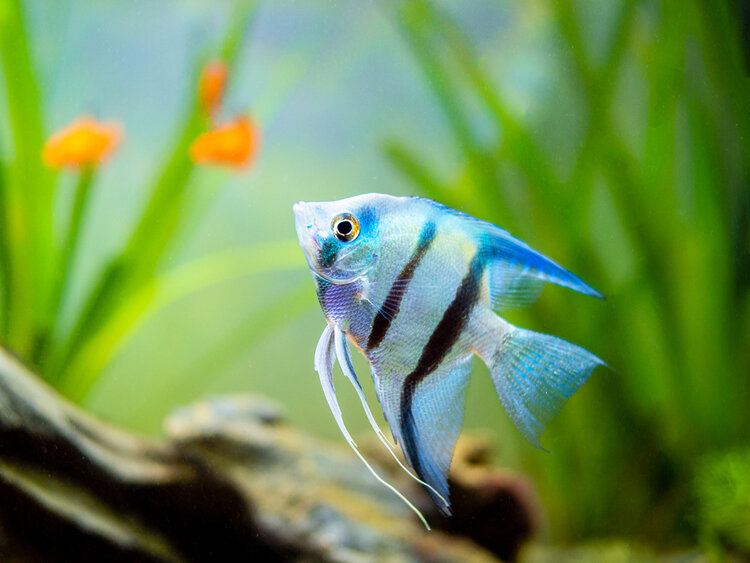
Although there are strictly only three species of angelfish, there are 19 strains or crosses of this popular freshwater fish that we know of. All strains can be kept in aquariums. Depending on the type, some can be kept in a community with others.
Read on for more information on the different species and strains that you could add to your aquarium, including 15 of the most popular.
What Are Angelfish?
Angelfish are a common sight in home aquariums. They have beautiful, pointed fins, and come in a spectrum of colors. Most angelfish on the market are captive-bred, and these are hardy and tough fish that can acclimate to almost any water condition and temperature, making them a popular choice for beginners as well as experienced keepers. They are generally easygoing and placid fish but it is important to remember that they are cichlids.
Cichlids pair off and they can become aggressive when mating or when protecting their fry so some aggression may occur at these times. However, with that said, the breeding of angelfish is such that many of these fish have lost their parental instincts and are inclined to eat their fry. A separate breeding tank is required if you want to ensure your fry make it to full maturity.
You should choose the species of angelfish according to the tank setup you have.
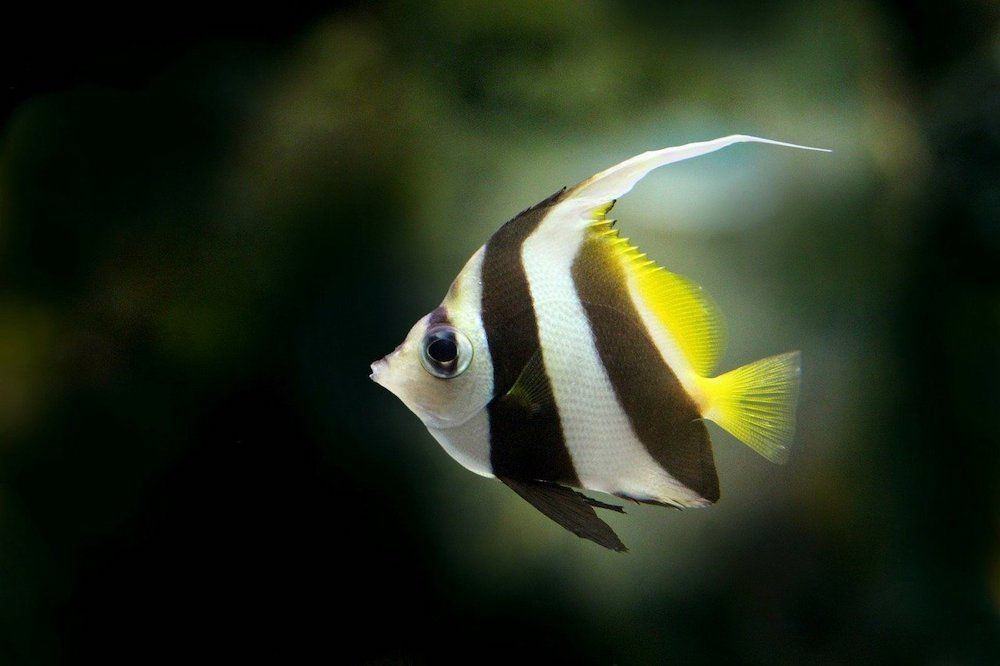
The 3 Species of Angelfish
The three species of angelfish are:
- Pterophyllum Altum
- Pterophyllum Leopoldi
- Pterophyllum Scalare
All originate from the Amazon Basin in South America, and most strains available on the aquarist market are Pterophyllum scalare. Pterophyllum altums are not found as often but are still available to the homekeeper, while Pterophyllum leopoldi are the most difficult to find, with many being wild-caught and therefore more difficult to successfully and healthily keep in a tank at home.
The 15 Most Common Angelfish Strains
The popularity of the beautiful angelfish means that a lot of breeding has been conducted to encourage more vibrant colors and striking patterns. Three of the most popular strains that are usually available in stores and on the market include:
1. Silver Angelfish
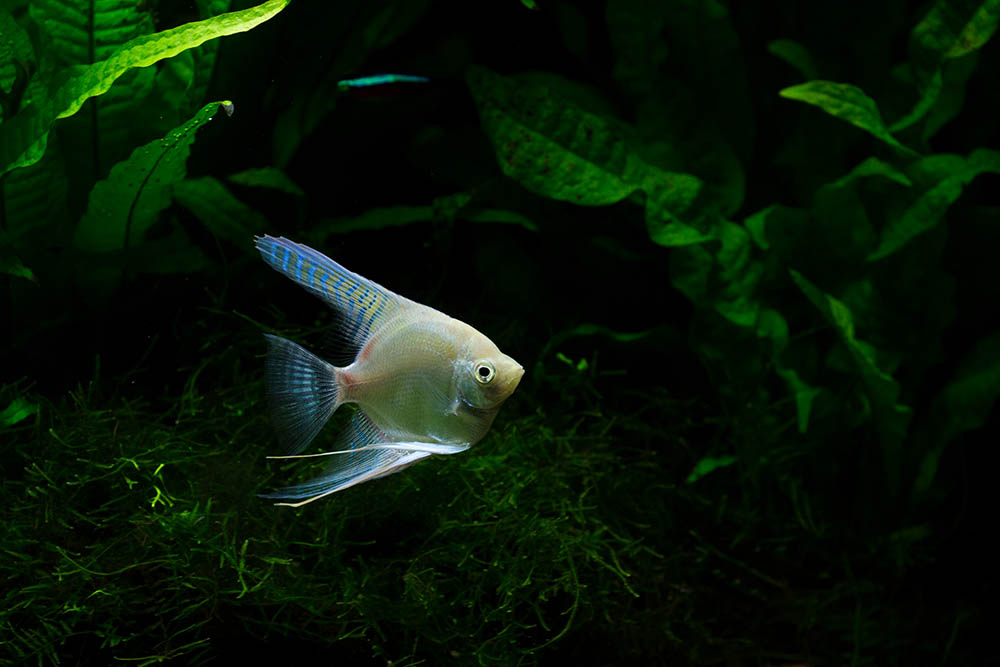
The silver angelfish is arguably the most popular of the captive-bred species and looks the most like its wild counterparts. Because they come from a long line of captive-bred fish, they are hardy and can withstand variable water conditions. They have a silver body with three black stripes, which can change shade according to the mood of the fish.
2. Zebra Angelfish
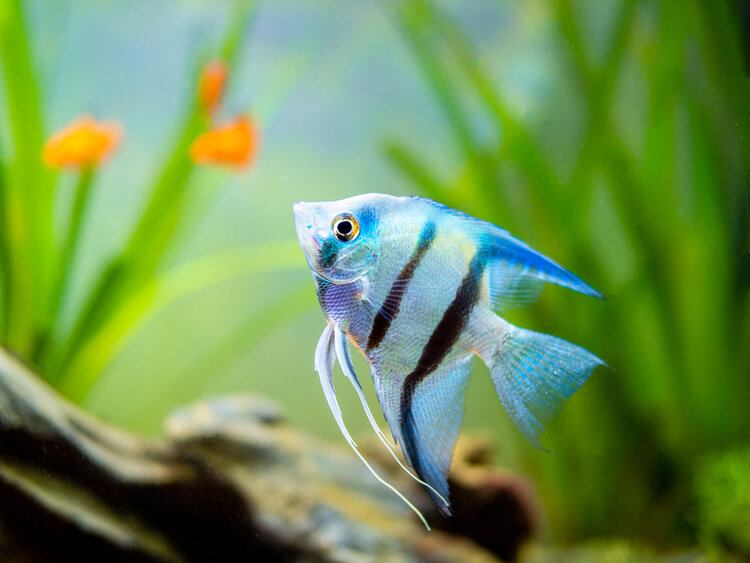
With a lot of similar attributes to the silver angelfish, it is obvious that this strain has been bred from the latter. Rather than three stripes, the zebra has anywhere between four and six, which makes it distinguishable from the silver angelfish. The extra stripes occur on the body, and both the zebra and the silver angelfish should have one vertical stripe through the eye.
Both strains have red eyes, which get darker and more prominent as the fish reaches maturity.
3. Albino Angelfish
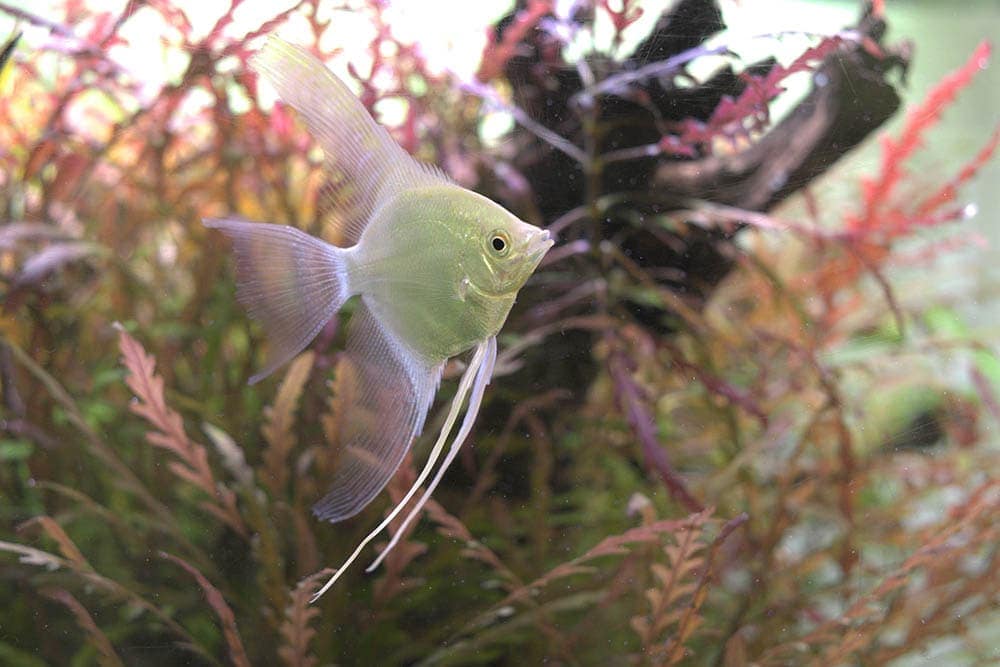
As with any albino animal, the albino angelfish completely lacks any pigmentation. They appear white and have orange-red eyes. The Albino is not usually found in the wild and has a shorter lifespan because it is prone to disease and death. Although they do have a unique look in the tank, you shouldn’t expect your albinos to be around for too long.
4. Koi Angelfish
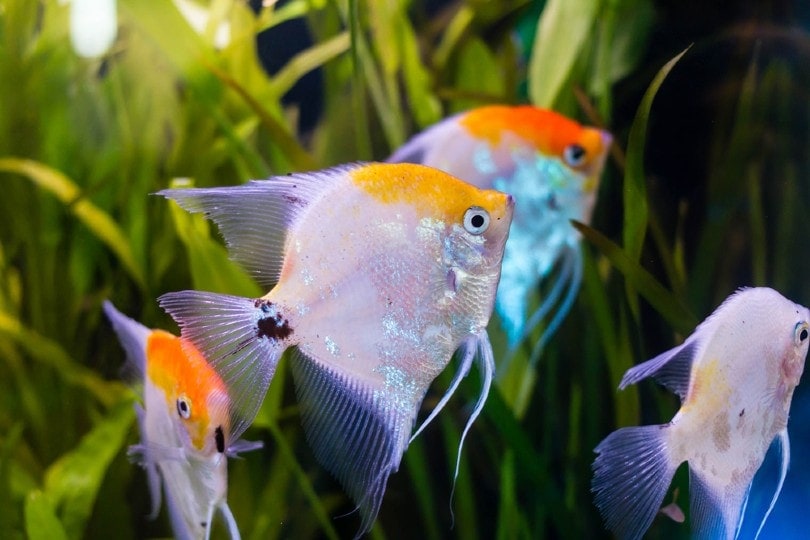
Many strains of angelfish change the hue of their markings according to their stress levels or mood, and the koi angelfish shares this trait. This strain has been bred to share similar markings and appearance to that of the popular koi fish, and in the case of this strain, it is the orange markings that change according to mood.
A darker red means that your koi angelfish is stressed.
5. Altum Angelfish
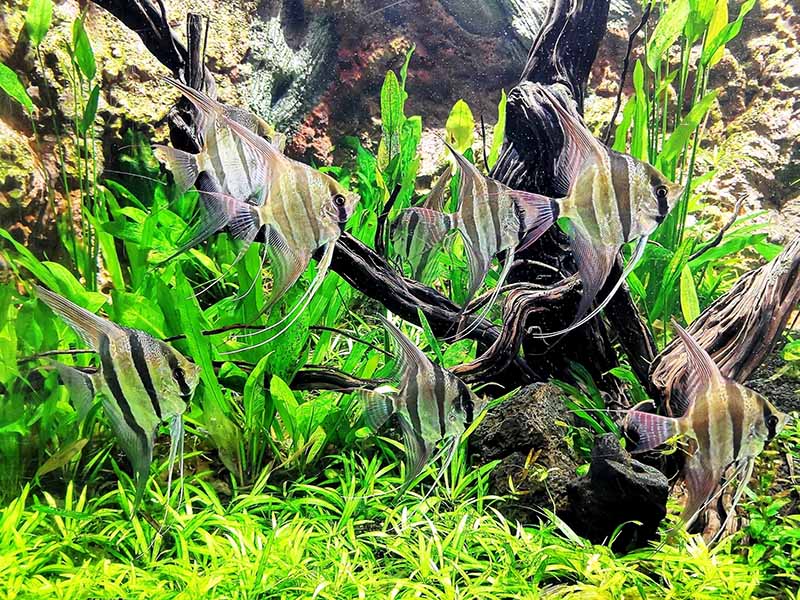
The previous four species of angelfish are all strains of Pterophyllum scalare, but as the name suggests, this is a strain of the Pterophyllum altum species. It is not as common as the scalare but is larger and usually flatter, so it does have a following with keen aquarists.
This species has not undergone the same extensive captive breeding, which means that it is not as hardy to different water temperatures, and it will take more care and maintenance to ensure healthy fix.
6. Black Lace Angelfish
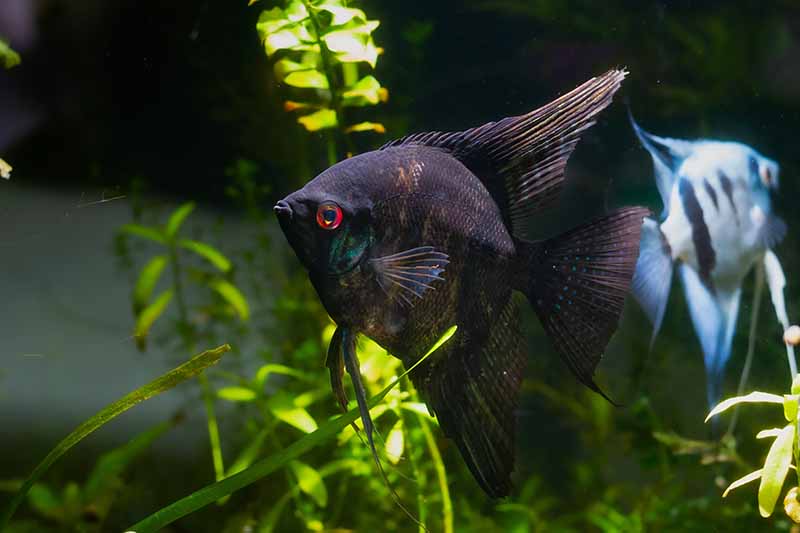
The black lace angelfish is a little different from most other breeds. For one, it isn’t as active, so it won’t swim around as much. It also prefers a quiet tank, so it will benefit from being kept as part of a smaller shole. The black lace angelfish can grow as big as 14 inches tall.
7. Gold Angelfish
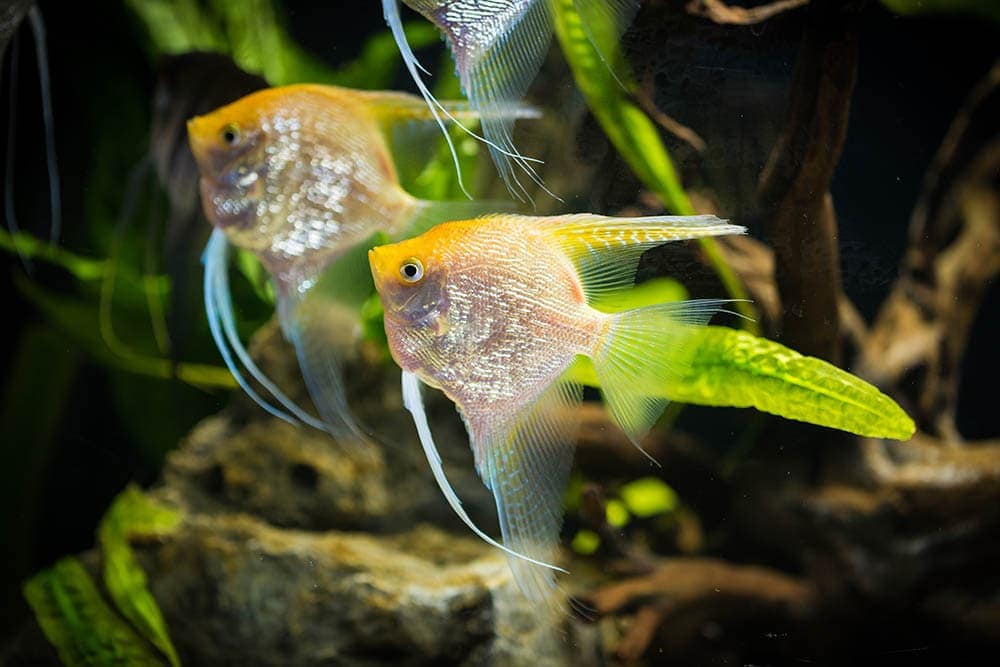
The gold angelfish is one of several veil angelfish (the black veil angelfish is listed below). It is, as the name suggests, gold in color and has stripes running through its fins.
8. Leopard Angelfish
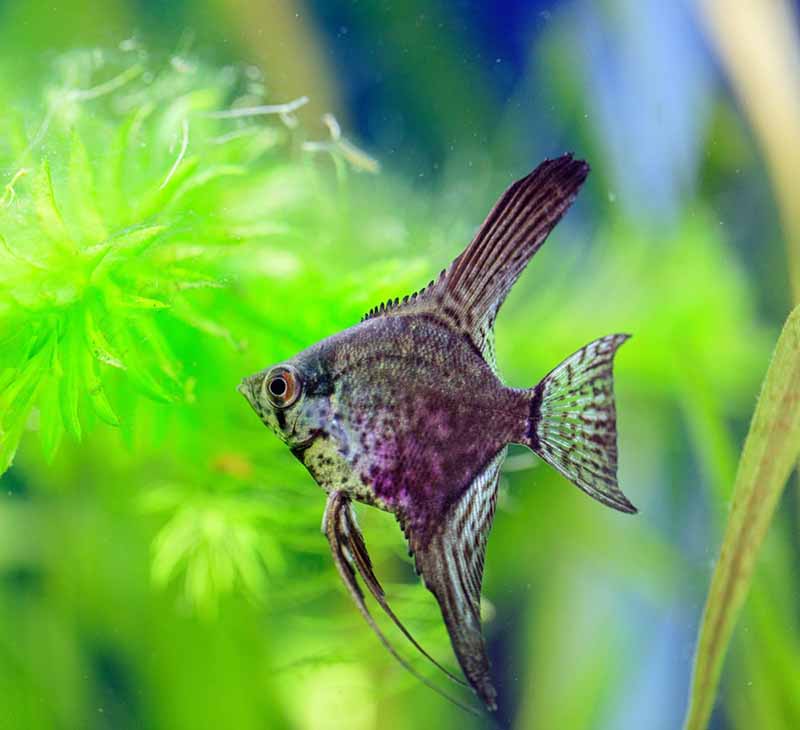
Although it has markings that are like that of the big cat, the leopard angelfish does change its spots. They change color according to the stress levels of the fish.
9. Marble Angelfish
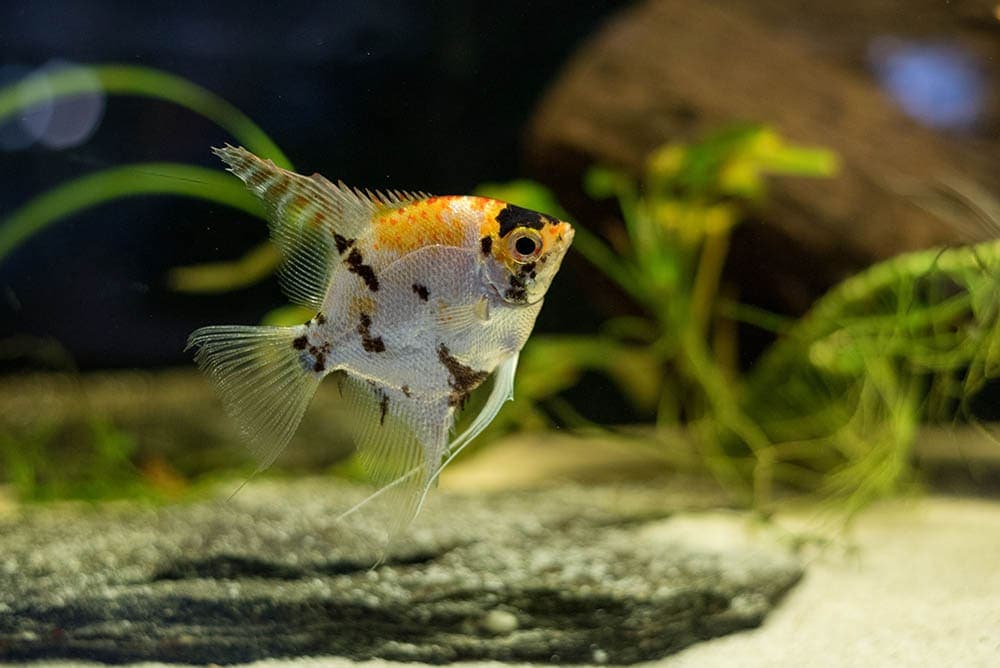
The marble angelfish looks like the zebra, except that its stripes are broken and have a marbled look to them, rather than being solid stripes.
10. Black Veil Angelfish
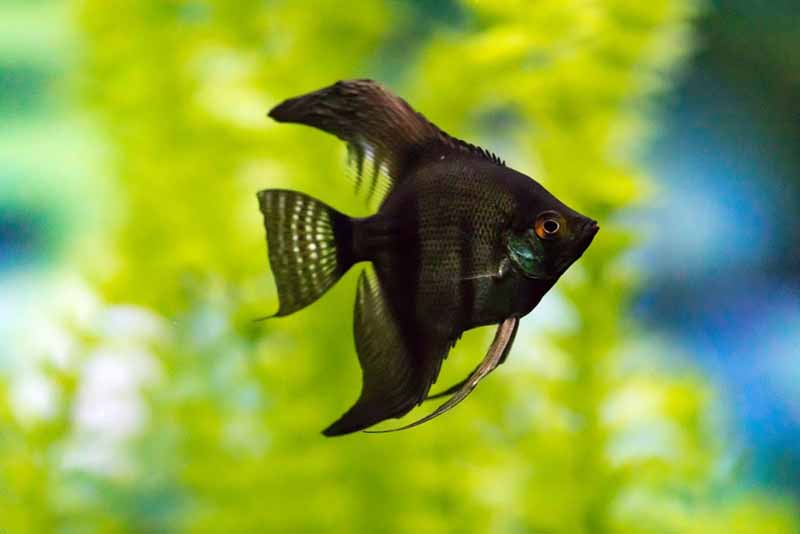
Another of the veil angelfish species, the black veil angelfish requires more room than a lot of other strains: around twice as much room so a 30-gallon tank will only be suitable for two.
11. Blushing Angelfish
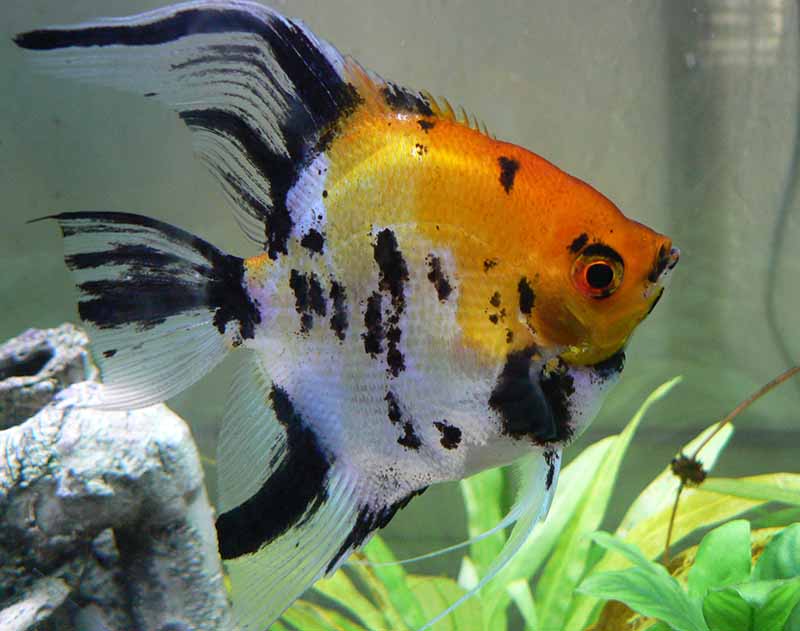
Named for its markings, the blushing angelfish has no color pigmentation except for small patches under the eyes. These tend to be orange or pink.
12. Smokey Angelfish
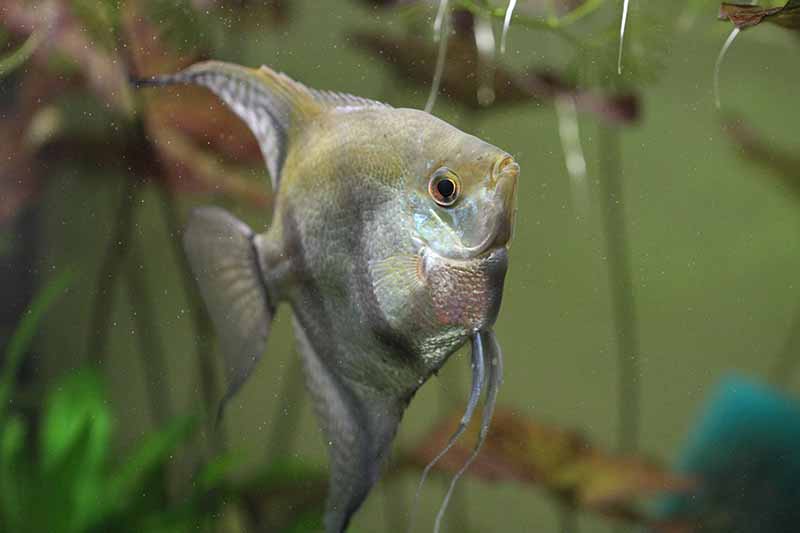
The smokey angelfish has an almost camouflaged appearance. It has markings all over the body and these can vary from brown to grey and black. The patterns are not symmetrical or uniform at all, making them an interesting appearing variant.
13. Platinum Angelfish
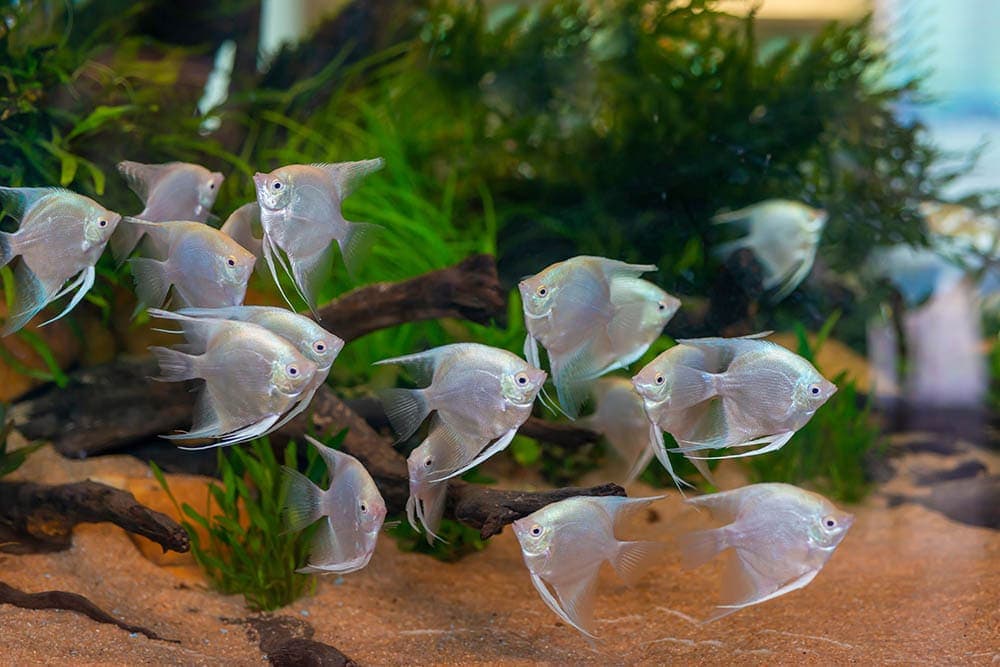
If you like the idea of a plain-colored angelfish, but you don’t want the short life or the red eyes of the albino, the platinum angelfish is ideal. It appears white, although it may have a slightly gray appearance, and is a popular choice.
14. Grey Ghost Angelfish
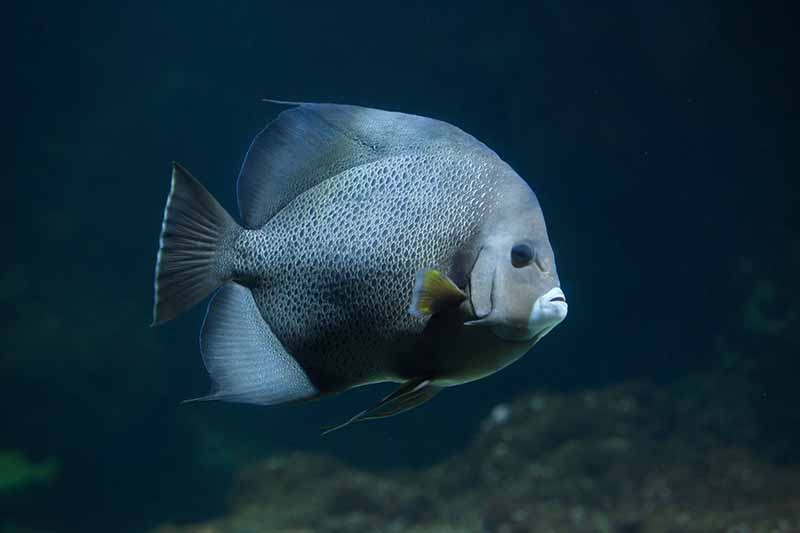
Of the different ghost variations, the grey ghost angelfish is perhaps one of the best-looking. It is grey, lightening towards the underside, and appears like an apparition as it darts across the aquarium.
15. Clown Angelfish
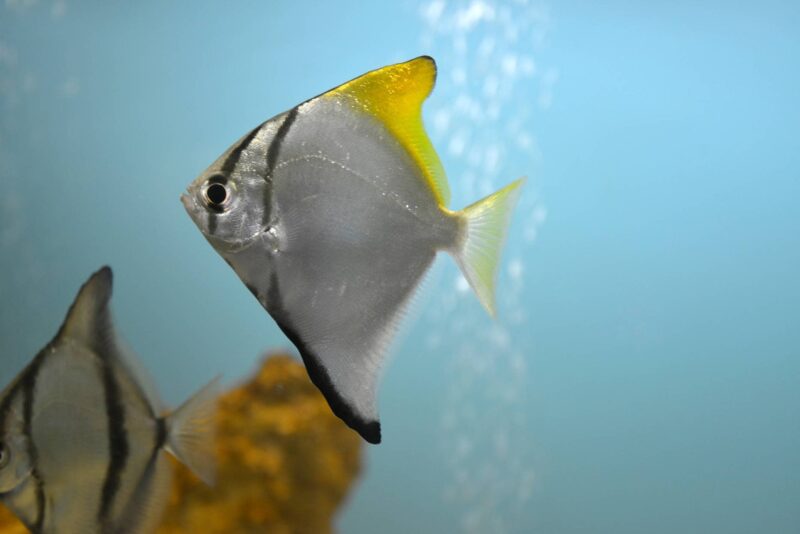
The clown angelfish is usually white with black markings. We say usually because every single clown has unique markings, some of which can include orange or gold colors. While you never really know what you’re going to get, at least you know it will be the only fish with those unique markings.
Angelfish Care Tips
Although the modern angelfish is considered hardy and adaptable, you will enjoy a longer life and a more enjoyable fish-keeping experience if you keep these beautiful aquatic animals in ideal conditions.
- Tank Size – Ideal tank size varies according to the number of angelfish and other fish in your tank. For keeping one species, aim for a 30-gallon tank for four inhabitants. If you can offer more space or keep fewer fish, this will provide even better conditions.
- Water Temperature – Although captive-bred angelfish are said to be hardy and can adapt to moderate water condition changes, the ideal temperature to keep these cichlids is somewhere between 78°F and 86°F. They will thrive in water with a pH somewhere around 7 and although they prefer harder water, they will happily live in softer water, too.
- Angelfish Communities – Some owners say that angelfish thrive in a small community of the same species, while other owners note that they have successfully kept solitary angelfish. Generally, keeping three or four together will yield the best results. Remember that they are considered semi-aggressive fish, although they only really show signs of aggression when pairing and raising young. Do not keep any fish that will easily fit in the angelfish’s mouth and avoid any fish that would nibble at the fins.
- Choosing Food – Angelfish are omnivores which means, in the wild, they would eat a combination of meat, plants, and virtually anything else. In captivity, they prefer meat, but they will eat from the surface or the bottom of the tank. You can feed a variety of freeze-dried worms and some pellets.
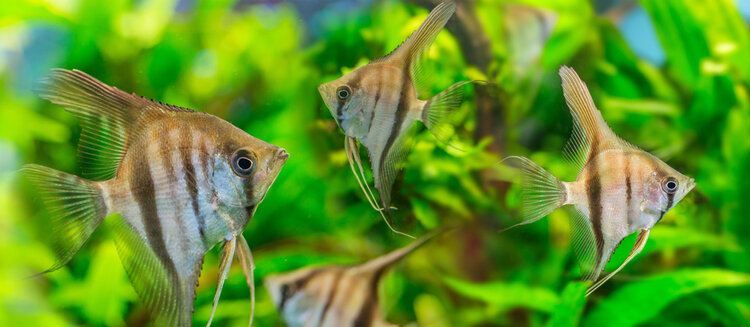
Conclusion – How Many Species of Angelfish Are There?
There are three specific species of angelfish, with the most commonly kept being the Pterophyllum scalare. However, under this species, there are many different strains, some of which may not yet have been fully recognized. These strains are created by selectively breeding other strains, giving a vast number of possibilities.
Some of the most common include the silver angelfish, which is as close to the wild species as possible. Unique strains like the albino also exist, although this specific strain will have a much shorter lifespan because albinism means that the fish is more susceptible to disease and illness.
Featured Image Credit: Joan Carles Juarez, Shutterstock



